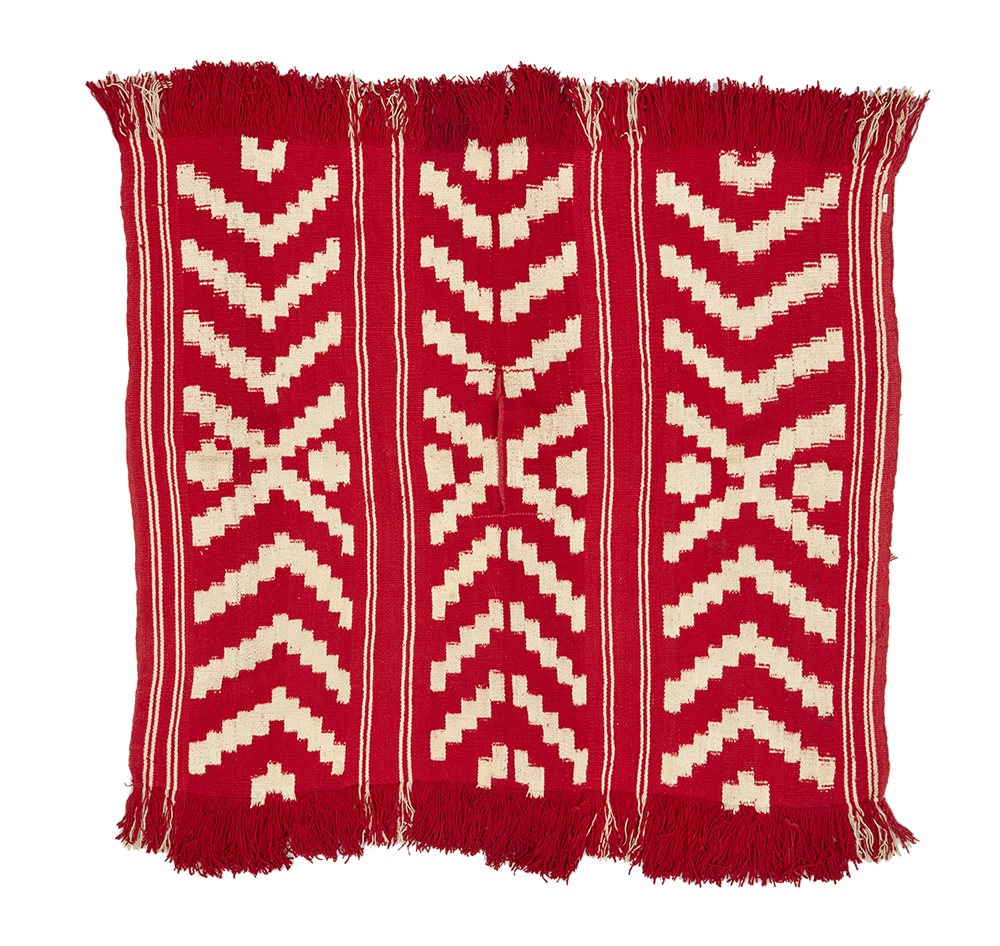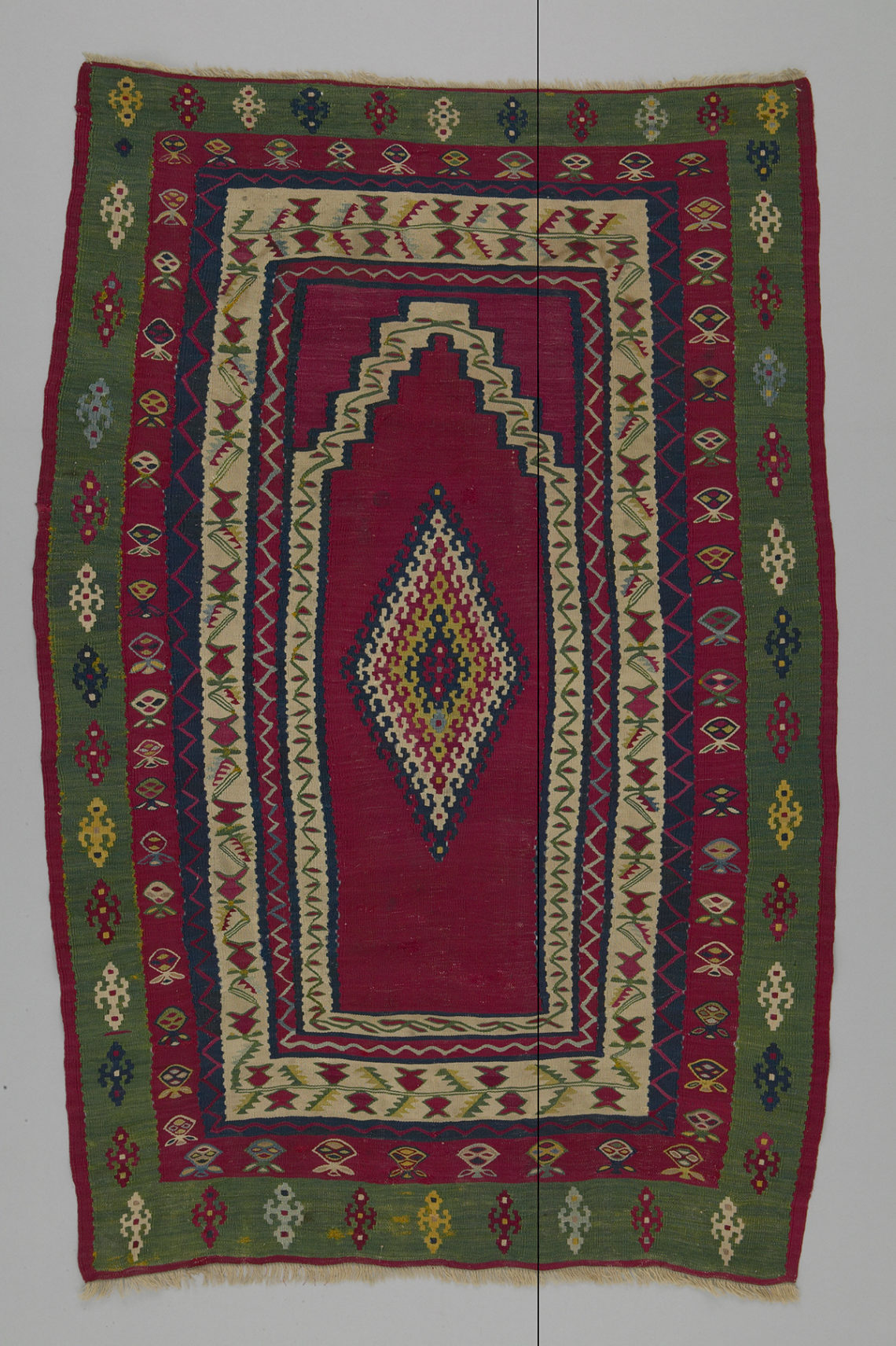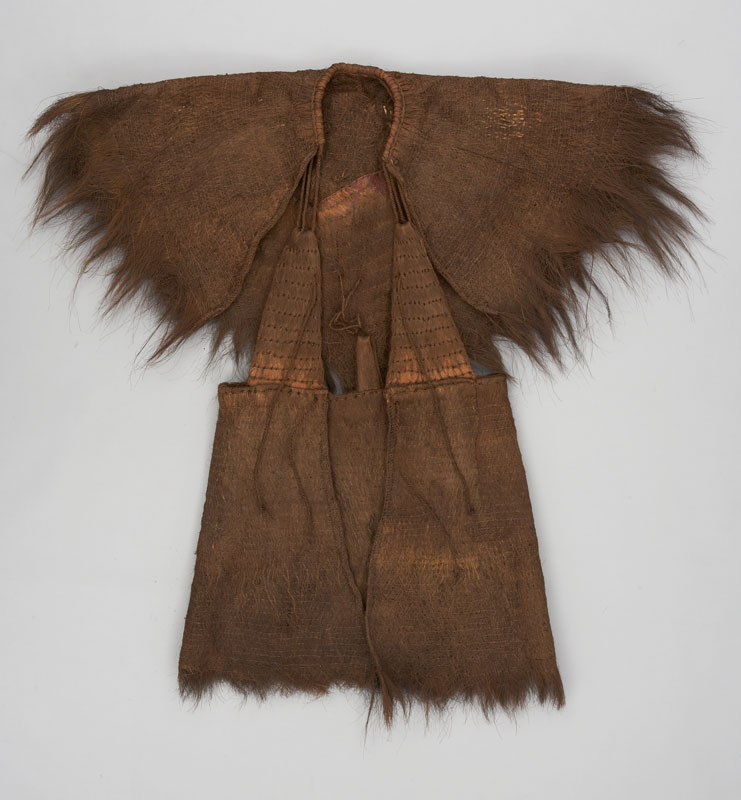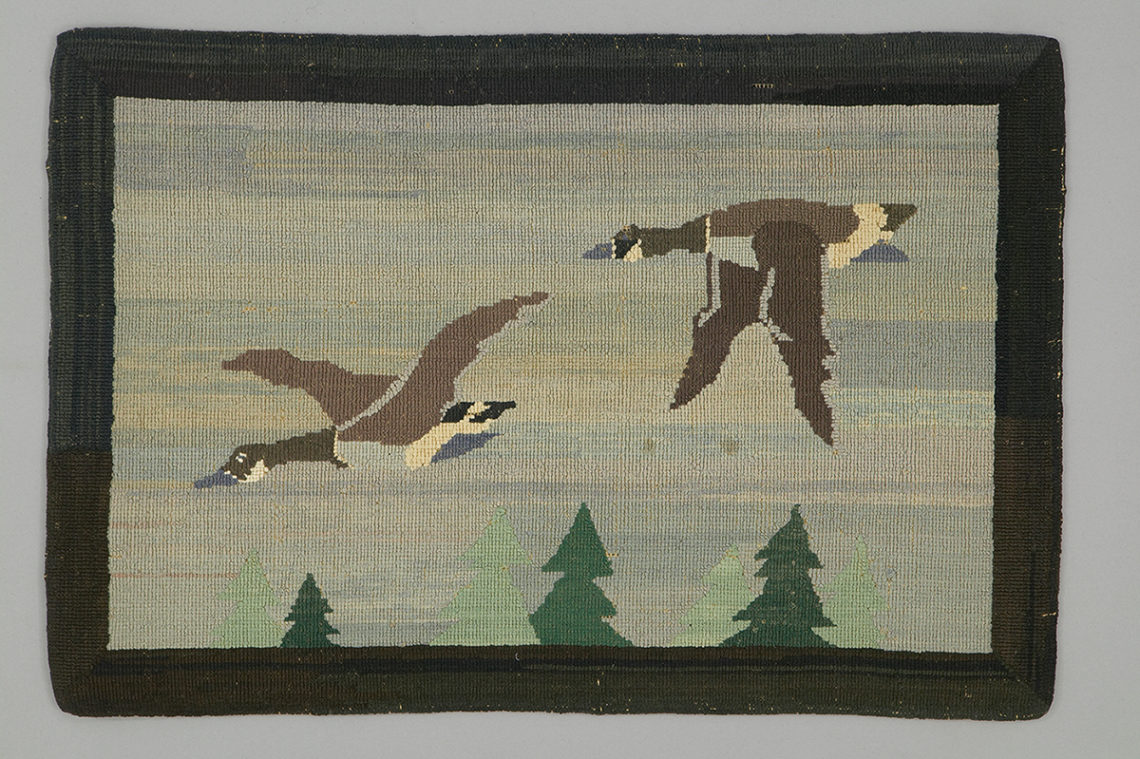Poncho, T92.0262
In anticipation of our next exhibition, Tied, Dyed and Woven, our Object of the Week is an ikat poncho from Chile, locally known as a trarikanmakuñ.
The poncho was likely invented to wear while on horseback in the early 17th century by the Mapuche people, who live in south-central Chile and southwestern Argentina. The Mapuche are Chile’s largest Indigenous group and live across many geographic zones, including cold and rainy regions where the thick woven wool of the poncho is especially useful because it is warm and rain doesn’t permeate the fabric.
The trarikanmakuñ is the most valued type of poncho because the designs are made using the ikat dye method. They are woven in one piece on an upright loom. Women weave the ponchos for the men in their family as a gift to provide care and protection.
The red colour is symbolic of power connected with blood and vital energy. The main design is the stepped cross which represents stylized ancestor figures. Wearing the poncho during ceremonies can reinforce relationships with their ancestors. Similar variations of this design have been found in Bolivia, Peru and Ecuador.



